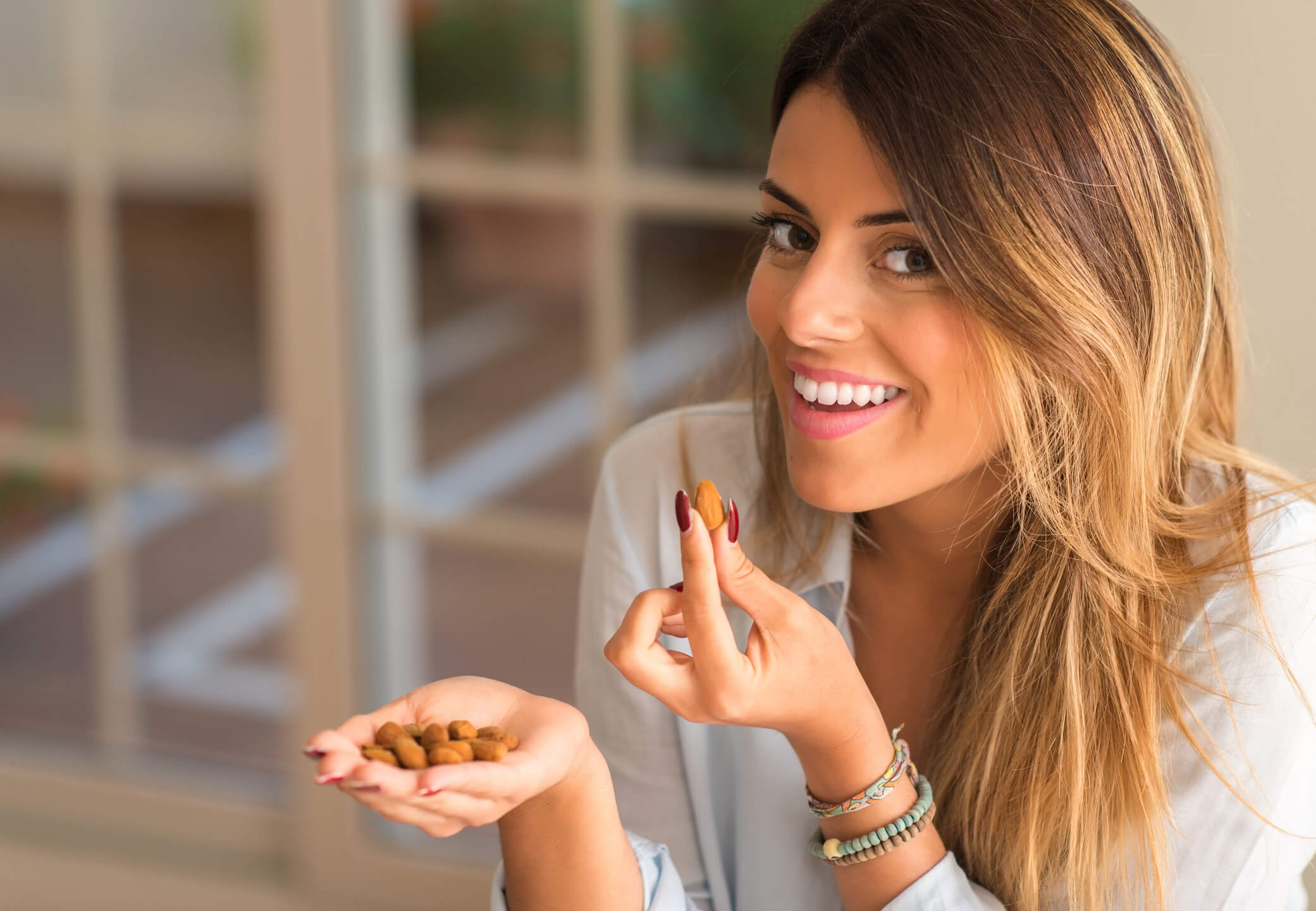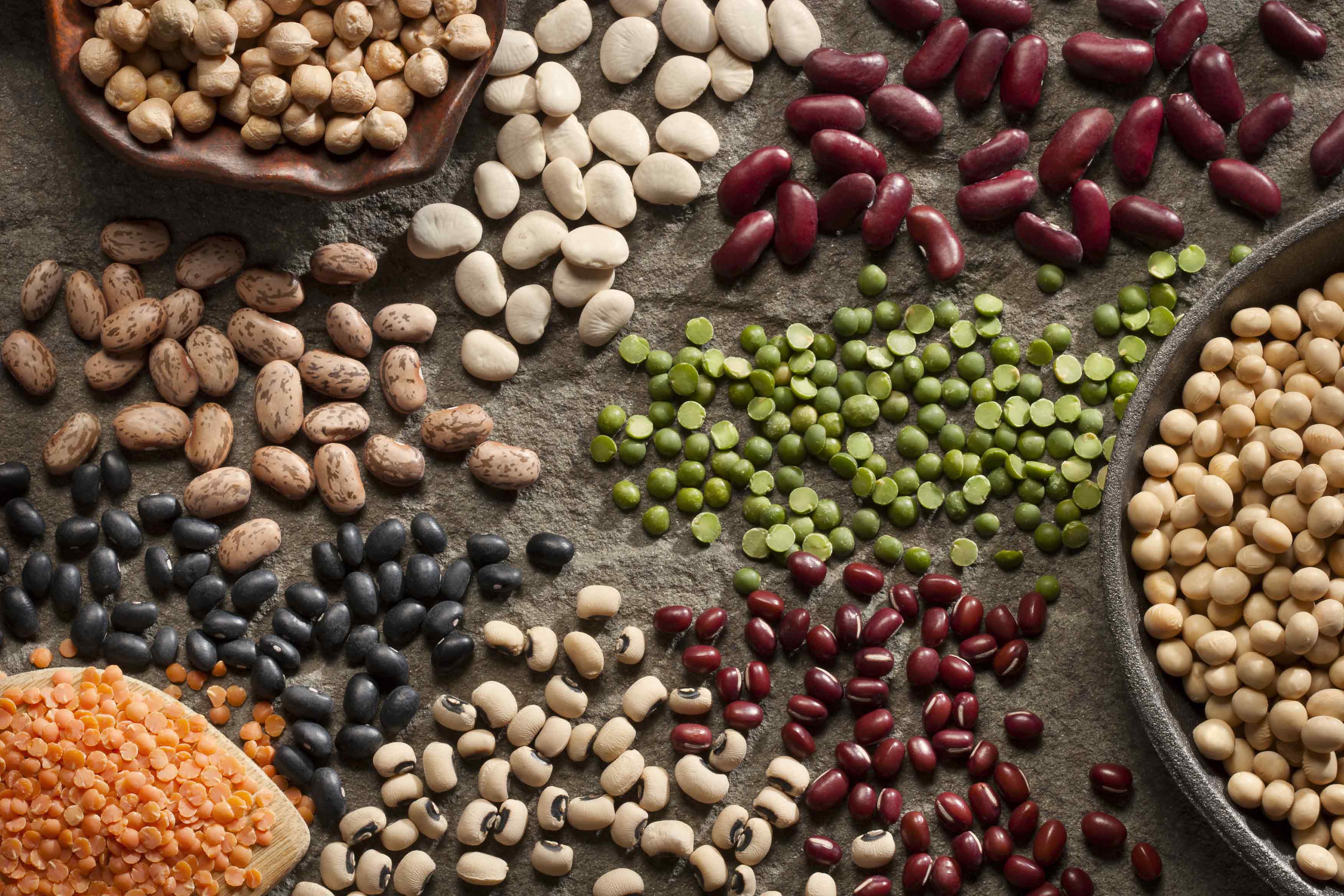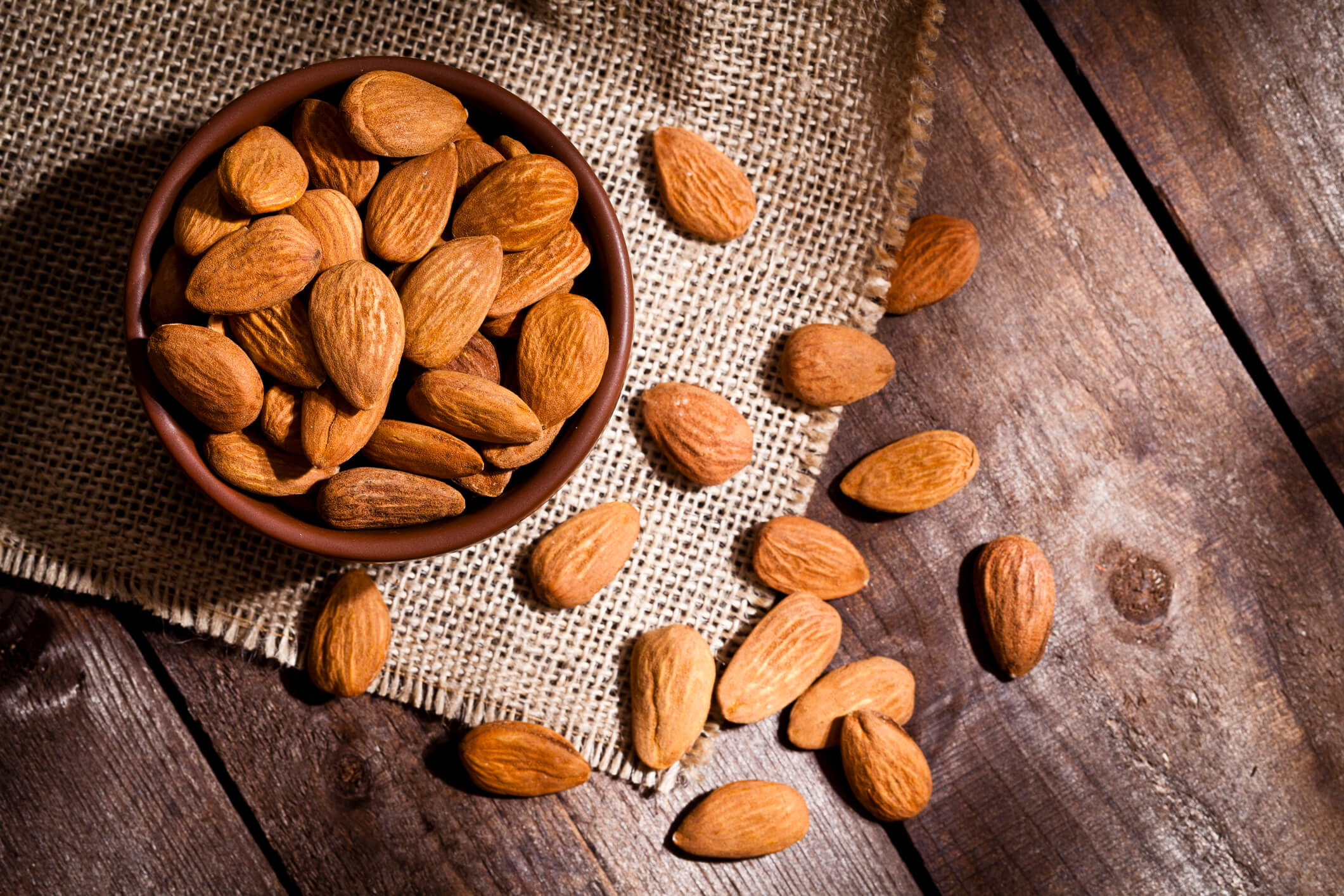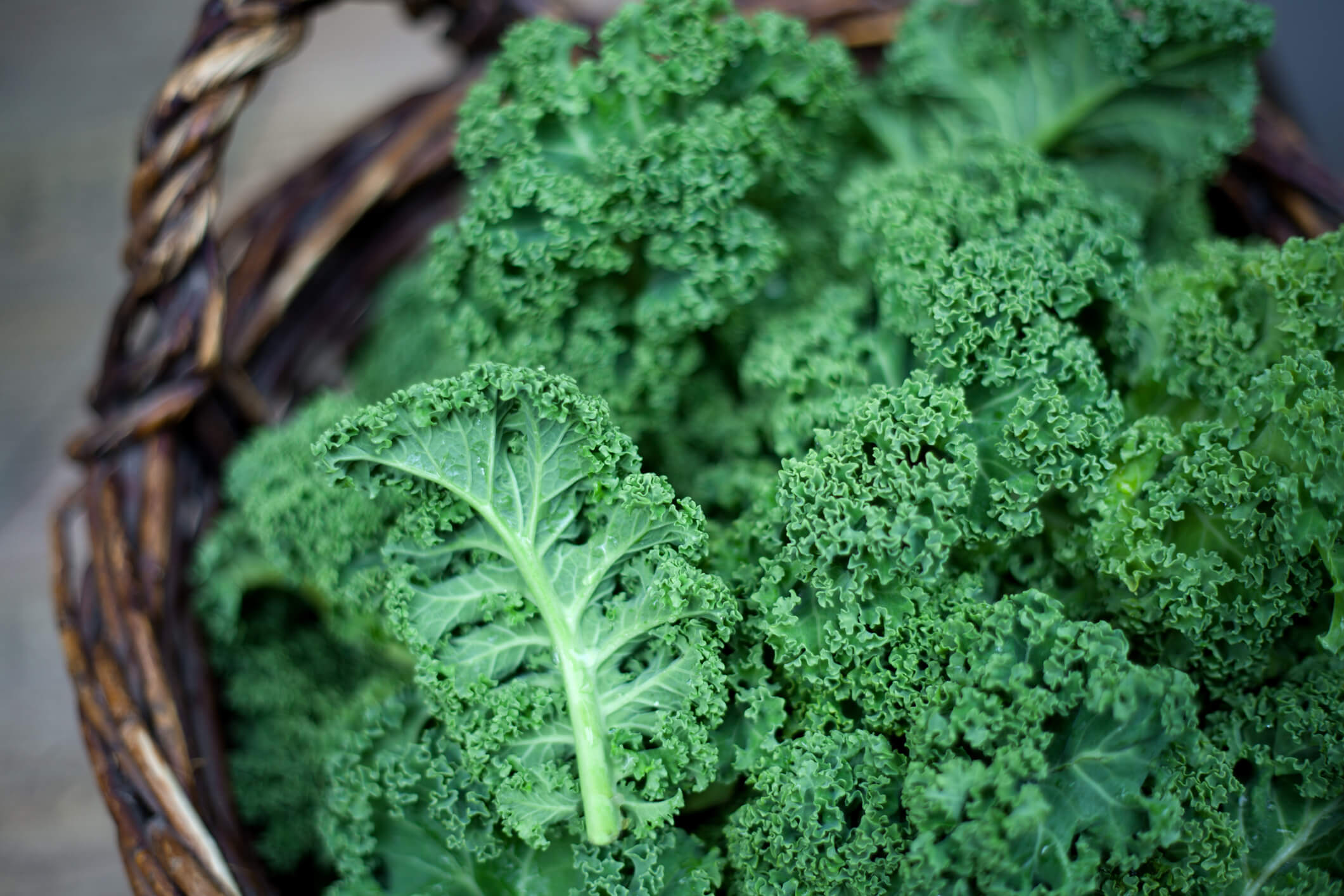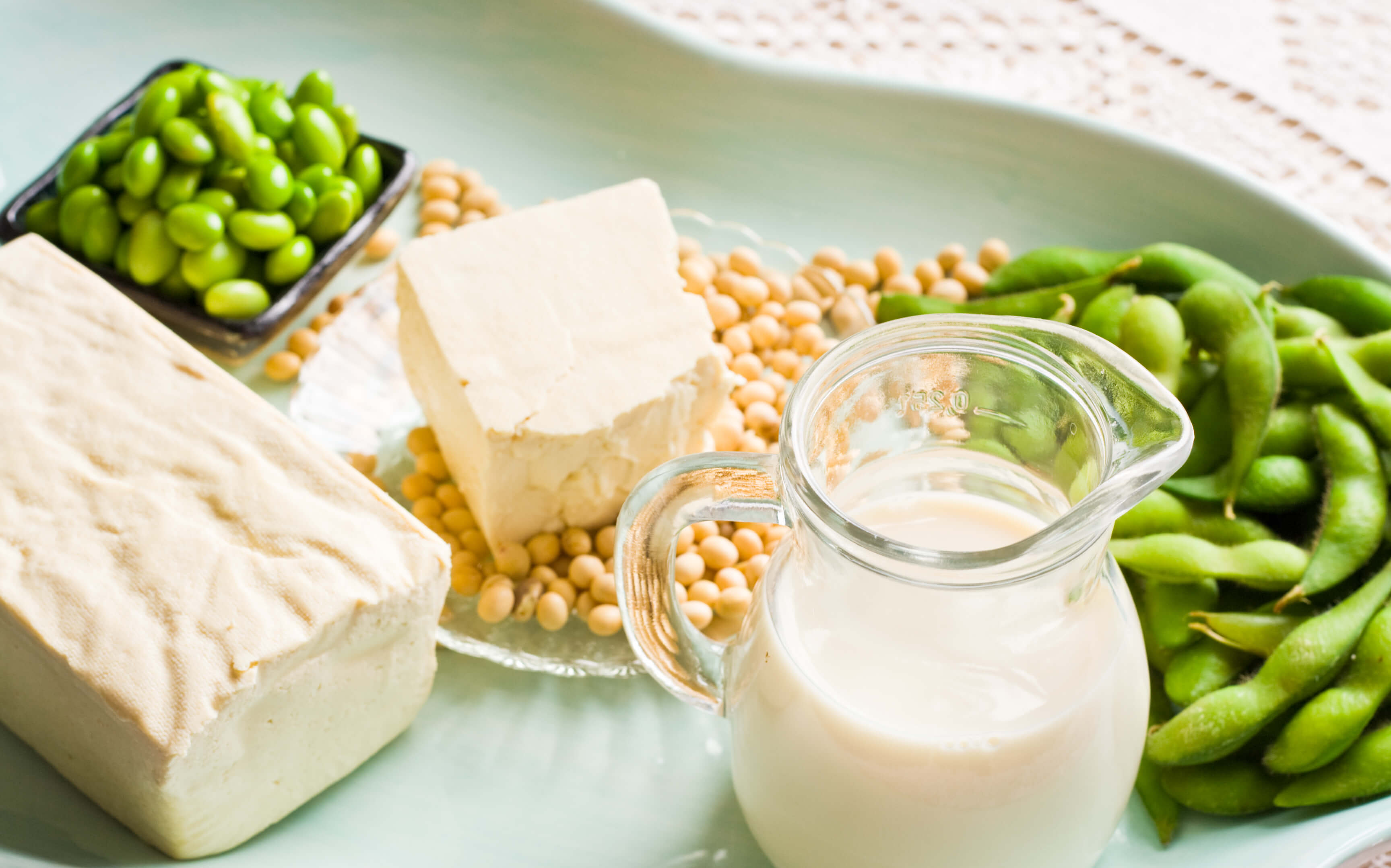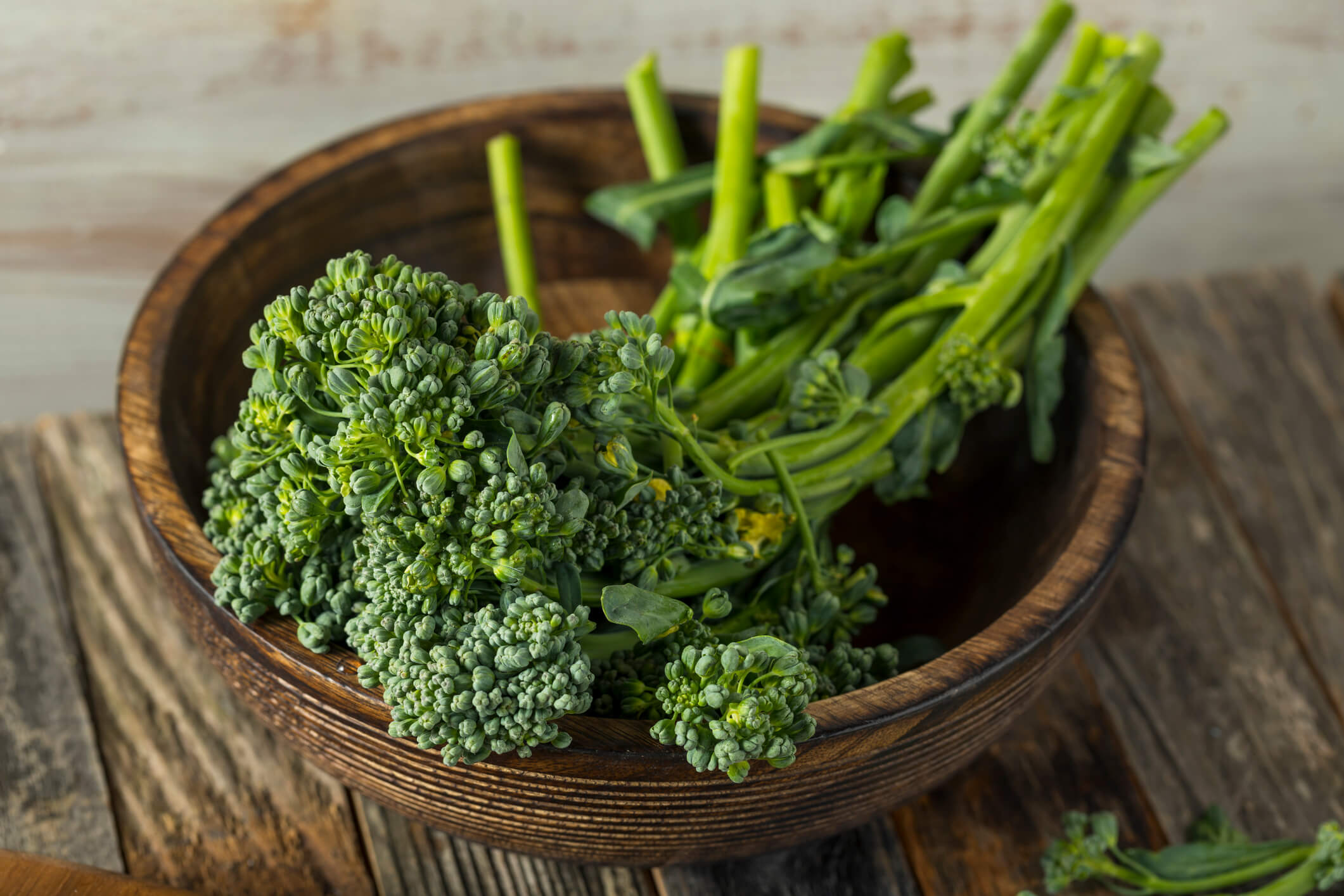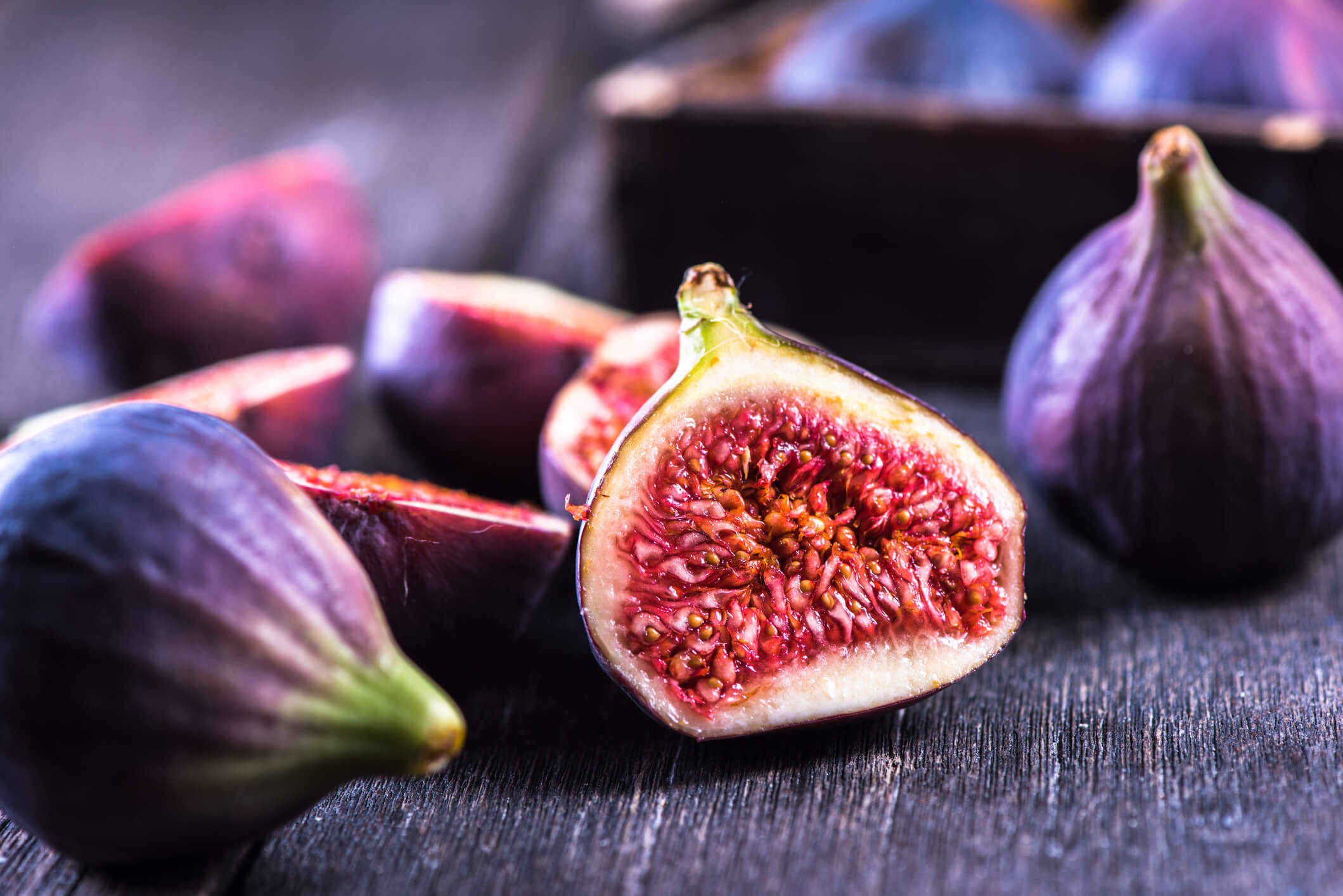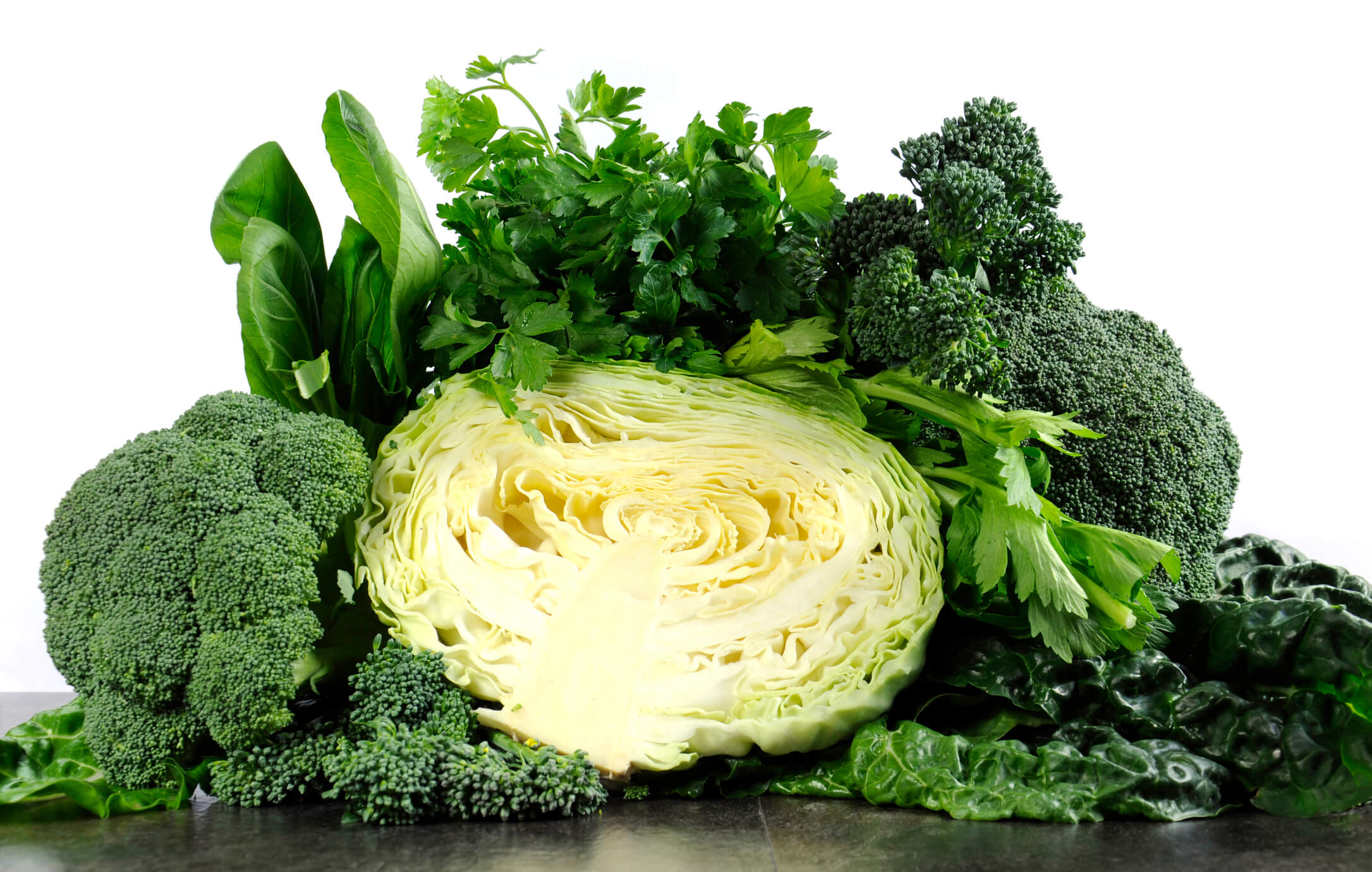You hear that calcium is essential to strong bones. And that the best source of calcium is dairy products. But is that the whole story? How should you get the calcium you need? And what are some of the most healthy, calcium-rich foods? Read on to see what the science says so you can make the best decisions for your health.
As a teenager, I remember seeing TV commercials featuring celebrities and athletes proudly wearing milk mustaches, gazing into the camera, and asking, “Got Milk?”
As the grandson of the co-founder of the Baskin-Robbins ice cream chain, that question had a particular resonance for me. And as the son of John Robbins, who walked away from an opportunity to helm that chain for ethical reasons, I knew the answer that fit for me.
“Yessir! I got almond milk!”
The Got Milk? campaign, which ran from 1993 to 2014, made an effective and lasting impression on consumers. And it’s one reason why so many consumers, even today, strongly associate calcium with milk and dairy products.
But is this message valid? Are milk and dairy products really the best places to get calcium? Are other calcium-rich foods better for you? And is calcium as important as we’ve been told it is?
What’s the Role of Calcium for Your Health?
Calcium is the fifth most abundant element in the earth’s crust. It’s just about everywhere in the form of rocks and minerals. And it makes its way into plants and then into the animals who eat plants.
Calcium is an essential mineral for human health. It’s primarily stored in your bones and teeth. (And it’s what makes your pearly whites so strong).
More calcium exists in your body than any other mineral. That works out well because you need calcium to perform some essential functions.
Calcium helps:
- Carry messages between your brain and the rest of your body;
- Your nerves and muscles to move;
- Transport enzymes and hormones through your blood to where they need to go;
- Keep your muscles, nerves, and blood vessels functioning well; and
- Play a vital role in maintaining healthy blood pressure.
Calcium also enables the most critical muscle in your body — your heart — to receive signals and contract. Without calcium, your heart wouldn’t work!
How Much Calcium Do You Need?
According to the U.S. FDA, the Recommended Dietary Allowance for adults 18 years and older is 1,000 to 1,200 mg of calcium per day.
The FDA says that your calcium needs increase to 1,300 mg per day during teenage years, pregnancy, and lactation. And that postmenopausal women may also need to increase their calcium intake.
But these numbers may be high. The National Health Service of Britain recommends considerably less calcium per day — only 700 mg.
So how much calcium you need apparently depends on which side of the pond you stand! (Or maybe, just possibly, it could also depend on how much food industry lobbyists influence your government bureaucrats.)
Calcium Myths and Controversies You Need to Know
Calcium may be one of the most talked-about nutrients. But that doesn’t mean everything you hear is necessarily true.
Especially when information is coming from trade organizations, food companies, or manipulated governments. (See more about the dairy industry’s whitewashing in our article here.)
Here are some of the most widespread myths about calcium:
Myth #1 — Dairy Products Are the Best Sources of Calcium
Dairy is high in calcium. But contrary to popular belief, high dairy consumption doesn’t correlate with better bone health.
In fact, osteoporosis and bone fractures are most common in the United States, Finland, Sweden, and the United Kingdom — the countries where people consume the most dairy products.
Eating a lot of dairy products can also increase your risk for certain cancers, such as prostate, breast, lung, and ovarian. This may be due to sex hormones like estrogen and other growth factors naturally present in milk.
Dairy products deliver a lot more than just calcium. They come with animal proteins, lactose, hormones, contaminants, and even antibiotics.
Of course, there are other downsides to the industrialized dairy industry, like that it’s cruel to animals and damaging to the planet. (For more concerns about dairy, check out this article.)
Myth #2 — Getting Enough Calcium Is the Most Important Thing You Can Do for Bone Health
Calcium is important for bone health. But calcium isn’t the only thing your bones need to be strong.
Vitamin D — which you make with the help of the sun — is also essential.
People in countries like India, Peru, and Japan, eat around one-third the amount of calcium that Americans do, yet in these countries, bone fractures are rare. They have much higher exposure to sunlight due to geographic location, which naturally increases their vitamin D levels.
You can get the vitamin D you need with just about 15 minutes per day in the sun. Taking a vitamin D-containing supplement can also be beneficial.
Being active as you age is also highly recommended, and has been proven to help prevent fracture. Exercises to focus on for bone health especially include weight-bearing activities, such as walking, running, tennis, dancing, stair-climbing, and weight-lifting.
Myth #3 — Everyone Should Take a Calcium-Containing Supplement, Just to be Safe
I’ve known many people who take calcium supplements fervently in an attempt to keep their bones strong as they age. Around 43% of Americans take a calcium-containing supplement, including 70% of older women.
But is this helpful?
Research suggests that for many people, calcium supplements may do more harm than good.
The risks of calcium supplementation are especially significant for people with a history of kidney stones.
And this isn’t a new finding. A large epidemiological study published in the New England Journal of Medicine in 1997 looked at calcium intake and kidney stone incidence among almost 92,000 women between the ages of 34 to 59.
The women, who had never had a kidney stone at the outset of the study, were followed with questionnaires from 1980 to 1992. The researchers found that those women with higher dietary calcium intakes had reduced risk for kidney stones, while those who took calcium supplements increased their risk for kidney stones by 20%.
The 2011 Women’s Health Initiative randomized clinical trial observed kidney stone incidence among 36,282 postmenopausal women. Half were given calcium plus vitamin D daily, and half were given a placebo.
Those on calcium and vitamin D daily for seven years had a 17% increase in kidney stone incidence. This is thought to be because high doses of supplemental calcium make your body excrete more calcium in your urine, promoting kidney stone formation.
Calcium Supplements May Also Increase the Risk for Cardiovascular Disease
A study published in BMJ in 2008 followed 1,471 healthy postmenopausal women in New Zealand over five years, looking for adverse cardiovascular outcomes. Half of the women were given a placebo, while the other half were given calcium supplementation.
Those who took calcium supplements experienced more heart attacks, strokes, and other unwelcome cardiac events.
Calcium supplements may increase blood calcium, which can cause stiff arteries and increase blood pressure. Both of these contribute to the development of heart disease.
Calcium supplements can also prevent certain medications from working, as well. Specifically, they can reduce the absorption of certain antibiotics, anticonvulsants, and even, ironically enough, medications used to treat osteoporosis.
So if dairy products aren’t the best source of calcium, and if calcium supplementation comes with considerable drawbacks, the question is: Where should you get your calcium?
You might want to look at where cows get their calcium from: Plants.
9 Plant-Based, Calcium-Rich Foods
Below are some of the most naturally calcium-rich plant foods:
Plant-Based, Calcium-Rich Foods #1 — Seeds
- ½ cup sesame seeds = 350 mg calcium
- 1 ounce chia seeds = 180 mg calcium
I love to keep a variety of nuts and seeds in the pantry. I sprinkle sesame seeds on a salad or roasted veggies. Chia seeds are great in smoothies, oatmeal, or ground and sprinkled on just about everything.
If you prefer a spread, tahini (sesame seed butter) offers 130 mg of calcium in just 2 tablespoons. That’s about 10% of what your body will need in the United States and 20% of what it’ll need in Britain. (If you trust official government recommendations, that is!)
Plant-Based, Calcium-Rich Foods #2 — Beans
- ½ cup navy beans or baked beans = 60 mg calcium
- ½ cup kidney beans = 75 mg calcium
- ½ cup black beans = 160 mg calcium
Beans are incredibly versatile. And at under $2 per pound dry (or around $2 per can), they’re affordable, too. Add beans to soups, salads, burritos, pasta, casseroles, tacos, and pizzas.
Plant-Based, Calcium-Rich Foods #3 — Lentils
- 1 cup lentils = 80 mg calcium
Lentils are inexpensive and shelf stable. Try red lentils in soups like dahl, green lentils in salads, or brown lentils to make a lentil loaf.
Plant-Based, Calcium-Rich Foods #4 — Almonds
- ½ cup raw almonds = 80 mg calcium
- 2 Tbsp almond butter = 80 mg calcium
Almond butter is a great alternative to peanut butter, and it’s easy to make with a high-speed blender or food processor. Raw almonds are easy to add to smoothies, muffins, and pancakes, or just eaten alone.
Plant-Based, Calcium-Rich Foods #5 — Low-Oxalate Leafy Greens
- ½ cup of collard greens = 300 mg calcium
- 1 cup bok choy = 60 mg calcium
- 1 cup chopped kale = 80 mg calcium
Oxalates are compounds found in certain leafy greens that can block calcium absorption. Oxalates can make otherwise highly nutritious vegetables — like spinach, swiss chard, and beet greens — not-so-great sources of calcium.
Greens with lower oxalates include collard greens, bok choy, and kale. Mix these into salads or try them sauteed or steamed.
Plant-Based, Calcium-Rich Foods #6 — Soy
- 100 grams of tofu = 175 mg calcium
- 1 cup of Edensoy organic soy milk = 100 mg calcium
- ½ cup edamame = 60 mg calcium
Organic soy foods are great for many recipes. Use extra-firm tofu in stir-fries, pasta dishes, tofu scrambles, or even sliced on sandwiches. Try silken tofu in smoothies, dips, and sauces.
Edamame can be purchased in the frozen section of many markets, either still in pods or pre-shelled. Add edamame to salads, buddha bowls, or homemade hummus. You can drink soy milk plain, or use it in any other way you would regularly use cow’s milk — like in cereal or for baking.
Plant-Based, Calcium-Rich Foods #7 — Oranges
- 1 medium navel orange = 80 mg calcium
Oranges receive praise for their vitamin C content, but they’re also high in calcium. I can’t think of a better way to enjoy a juicy orange than by simply eating it raw.
Plant-Based, Calcium-Rich Foods #8 — Broccoli Raab (Rapini)
- 1 bunch cooked broccoli raab = 515 mg calcium
Broccoli is a decent source of calcium — coming in at around 40 mg per cup — but broccoli raab (also known as rapini) is even better. It can be boiled, sauteed, or seasoned and roasted.
Plant-Based, Calcium-Rich Foods #9 — Dried Figs
- 4 dried figs = 55 mg calcium
If you’re not a fan of eating dried figs plain, they’re great additions to baked goods, like muffins, breads, and scones. Some people even add them to smoothies.
What About Calcium-Fortified Plant Milks?
Most plant milks are fortified with calcium, though some aren’t. Fortified milks can contain as much — if not more — calcium than a glass of cow’s milk.
If you drink plant milk, check the label, as the calcium content can vary between varieties and brands.
Of course, fortification is really just a way of adding supplements to food. It may or may not be beneficial, but it’s certainly not the same as getting calcium from natural food sources.
Do Any Factors Affect Calcium Absorption?
If you’re one of the people who struggles with your calcium levels, it could be that the problem doesn’t stem from not consuming enough calcium. It may also be that you’re not absorbing it well.
Several things can interfere with how much calcium you absorb:
- Eating too much sodium. Salt can increase calcium loss. If this is a concern for you, avoid high-sodium processed and packaged foods, rinse canned beans and vegetables (unless they are unsalted, to begin with), and don’t add salt when cooking if you don’t need it. Many experts suggest that you keep your sodium intake to under 1,000 to 2,000 mg per day.
- Smoking and tobacco use. Habits like smoking and tobacco use can promote calcium loss, reduce bone density, and increase the risk of fractures. Other lifestyle factors common among smokers, such as inadequate physical activity, earlier menopause, poor diet, or alcohol use, can also contribute.
- Eating animal-derived protein. Eating a lot of animal protein can remove calcium from the bones and increase its excretion. This doesn’t seem to happen when you eat plant proteins, such as beans, lentils, or grains.
- Eating mainly animal-derived calcium. A study in the American Journal of Clinical Nutrition found that calcium from leafy greens was absorbed at significantly higher rates than dairy. Calcium in Brussels sprouts was absorbed at 64%, and calcium in kale was absorbed at 50%, while calcium in cow’s milk was absorbed at a rate of only 32%.
- Not eating enough of other nutrients. For your body to absorb and use calcium properly, you need other nutrients, including vitamins D, C, K, E, magnesium, and boron.
- Getting your calcium only from oxalate-containing sources. Oxalates can inhibit calcium absorption, so oxalate-rich foods, such as spinach, rhubarb, beet greens, and swiss chard, shouldn’t be relied upon for their calcium content (though they do contain many other healthy nutrients!). Be sure to eat other calcium rich foods, like the ones listed above, to ensure you get what you need.
What Happens When You Don’t Get Enough Calcium?
Your body regulates its calcium levels through biological checks and balances. If your blood calcium is low, your body will remove calcium from your bones to make up for it. This means that if you’re truly calcium deficient, you may not have obvious symptoms for a while because your body is trying to manage it.
Osteoporosis affects over 10 million adults over the age of 50 in the United States. Worldwide, over 200 million people suffer from this disease. The majority of cases are in postmenopausal women and the elderly, who have an increased risk for fractures in their spine, hips, and wrists.
Other symptoms of more serious calcium deficiency include finger tingling and numbness, convulsions, and changes in heart rhythm that can be very dangerous.
Eating plant-based, calcium-rich foods are probably your best bet for avoiding calcium deficiency.
The Final Word on Calcium
It’s important to get enough calcium — for the health of your bones, and your heart, and to carry out many functions in your body.
So do your body a favor and enjoy the best plant-based sources of calcium. They’re abundant in other minerals and nutrients as well… not to mention, cruelty-free and better for the planet!
Tell Us in the Comments:
-
What are your favorite calcium-rich foods?
-
What special precautions do you take to avoid osteoporosis?
Featured Image: iStock.com/ratmaner

